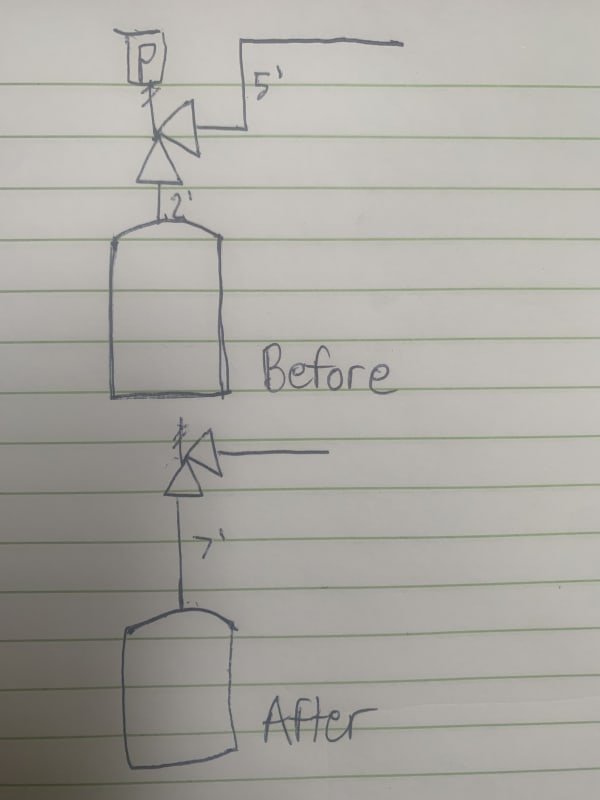YungPlantEng
Chemical
- Jan 19, 2022
- 94
Have a set of PRVs off a common header that discharge to a scrubber. The scrubber has a fan that blows some portion of fumes to atmosphere and recycles the remainder.
This is an old and poorly designed system with no relief documentation. I’m going to make some assumptions and say that only 3 of the relief valves are discharging… they were sized to 2000 scfm with no assumed back pressure because the max scfm of the scrubber (3000 scfm fan on it) is 6000…
This is a PSM system and a coded pressure vessel with an existing rupture disc. My basic questions are:
1. How can I estimate backpressure through the system when relieving? I can estimate pipe losses and the scrubber has a maximum pressure inlet of 10” W.C or so but from my understanding the constant backpressure is essentially nothing since the system is run as a “vacuum”. I’m used to systems that just outbreathe to atmosphere so I’m a bit out of my element.
2. How can I estimate the impact of piping additions preceding the PSV? This is a very small amount (maybe a spool piece?) but I’m not sure how exaggerated that impact would be on the system.
Sorry for the silly questions - feel free to just point out some texts if these questions aren’t useful and I need to do some reading up first.
This is an old and poorly designed system with no relief documentation. I’m going to make some assumptions and say that only 3 of the relief valves are discharging… they were sized to 2000 scfm with no assumed back pressure because the max scfm of the scrubber (3000 scfm fan on it) is 6000…
This is a PSM system and a coded pressure vessel with an existing rupture disc. My basic questions are:
1. How can I estimate backpressure through the system when relieving? I can estimate pipe losses and the scrubber has a maximum pressure inlet of 10” W.C or so but from my understanding the constant backpressure is essentially nothing since the system is run as a “vacuum”. I’m used to systems that just outbreathe to atmosphere so I’m a bit out of my element.
2. How can I estimate the impact of piping additions preceding the PSV? This is a very small amount (maybe a spool piece?) but I’m not sure how exaggerated that impact would be on the system.
Sorry for the silly questions - feel free to just point out some texts if these questions aren’t useful and I need to do some reading up first.

